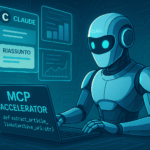
Let’s start with the basics of composable programming and why it’s such a big thing in software development.
The “bible” of composability states that the best way to build an app is to write code once, deploy many times, stack, and expand according to different client and business needs. Here’s where another key concept (or buzzword, depending on who’s talking) comes into play: we’re talking about microservices.
Microservices and composable software, however, have to follow certain best practices to avoid hyper-complexity. Open source code is key to ensuring enough backend flexibility and fast access for third parties and users. In this context, no code and open source are becoming a no-brainer choice for companies who decide to follow the “composable” path.
The Future is Composable
Platforms are pivotal in the transition from monolith architecture toward modular and distributed architectures, as applications become more specialized and complex.
In the video below, Entando Developer Advocate Anthony Viard tackles the issue of how, in a future of full “composable” developments, devs will turn into contributing developers. Don’t miss this video to discover more about composable programming and microservices!
[jwp-video n=”1″]
More articles about Microservices
5 tips for Microservices good practices
Using the Twelve-Factor Methodology in Cloud-Native Microservices
Building Microservices with Security in Mind
More about the video’s author
Anthony Viard has been a Java and Javascript developer for 11 years and started contributing to the open-source JHipster project in 2018 and then joined the core team in 2019. Impressed by their open-source capabilities, he’s been involved in many JHipster community events over the past 3 years. Last year he joined Entando to support their JHipster integration and then he moved to an advocacy position for Entando, working to create compelling content and connect communities. He’s been able to keep working on what he loves and contribute back to the community in new ways.




